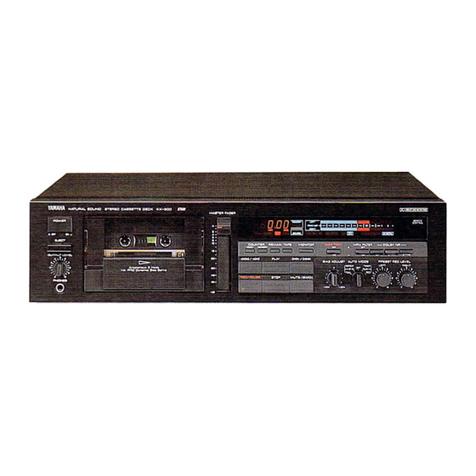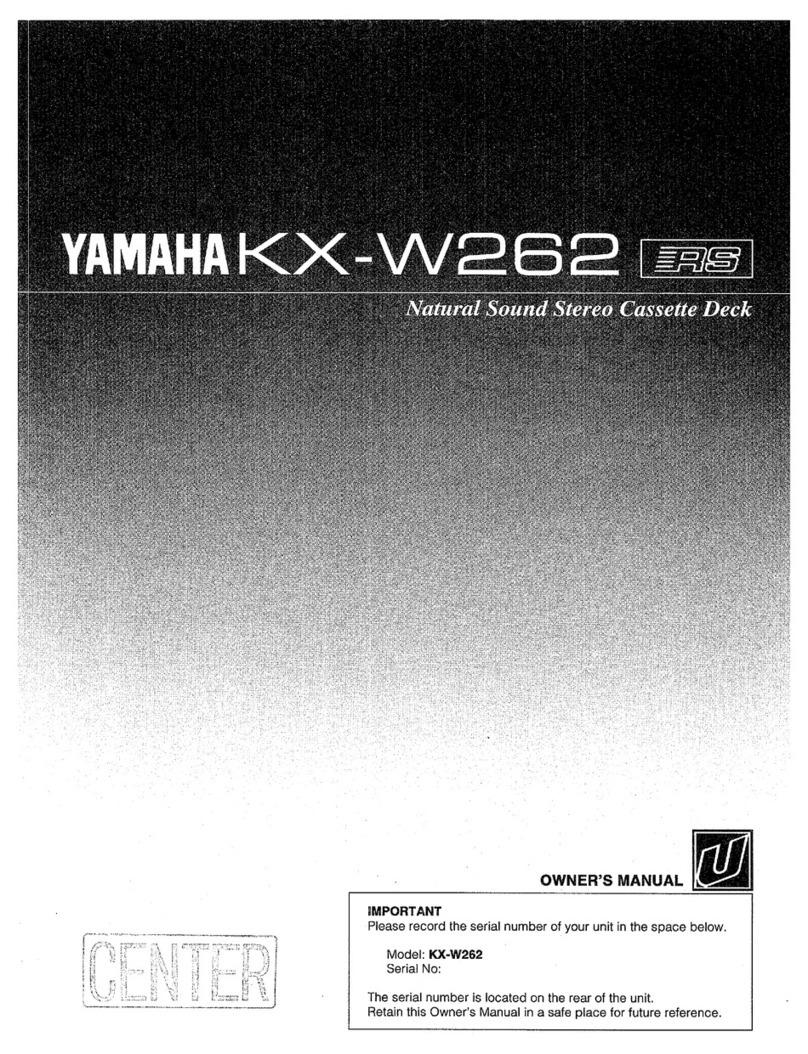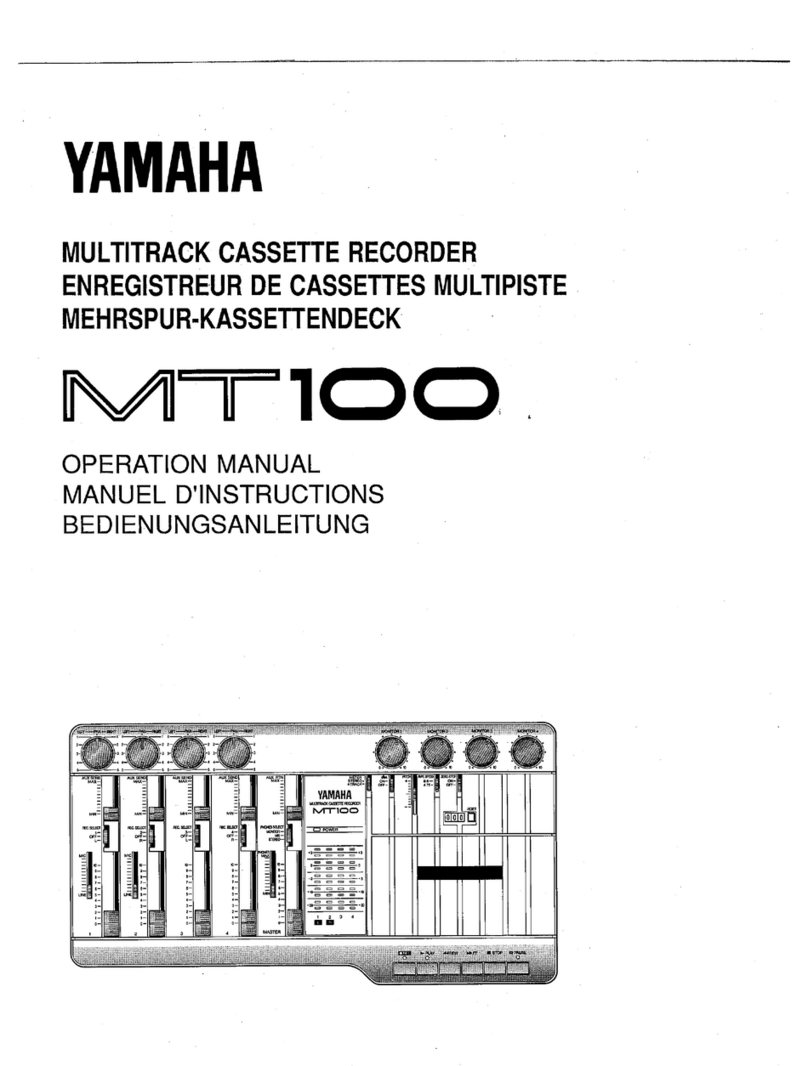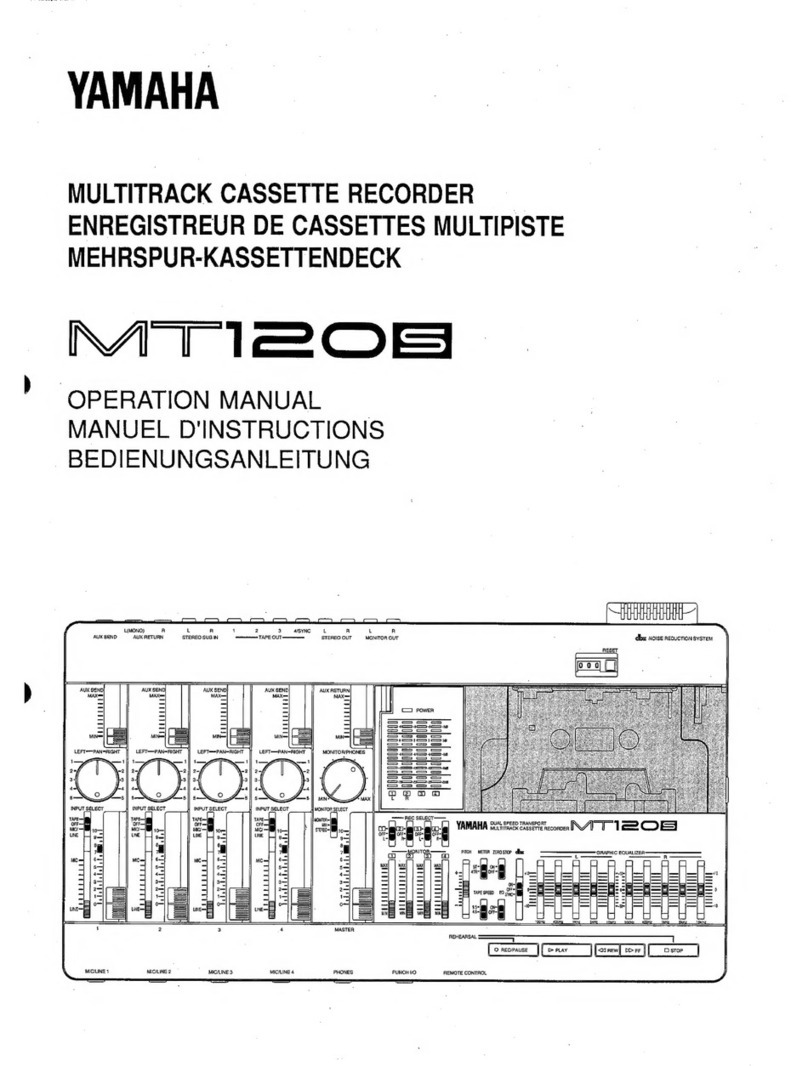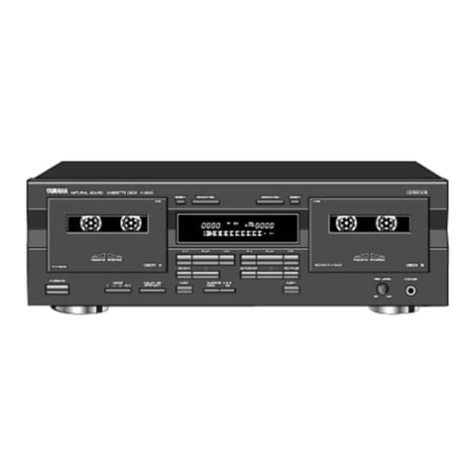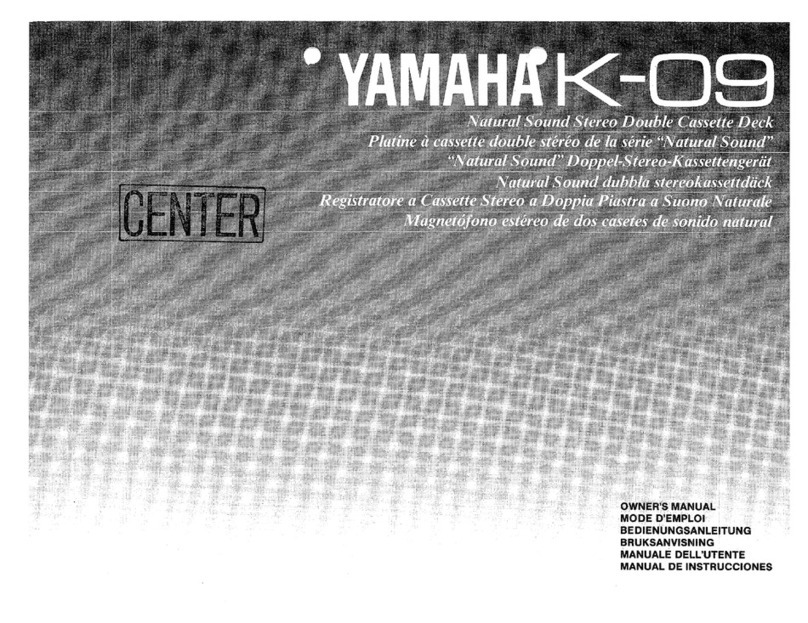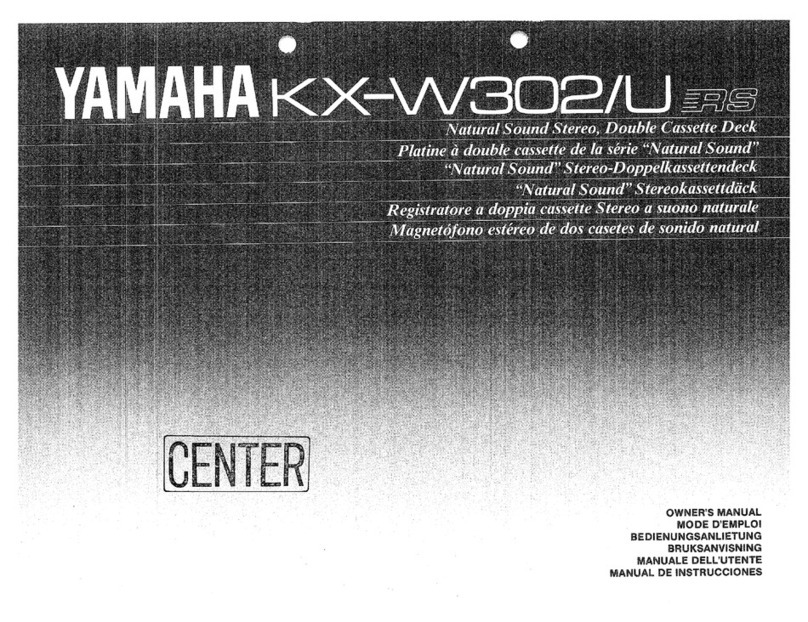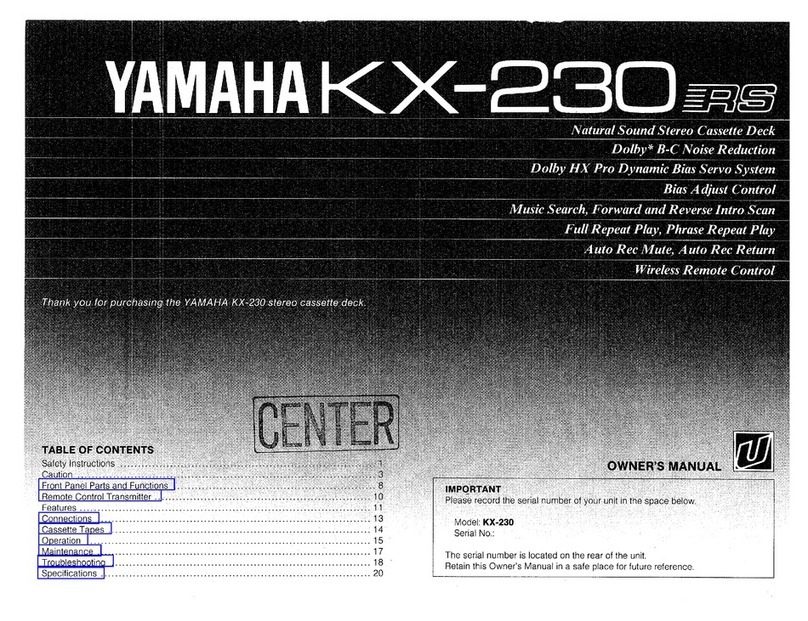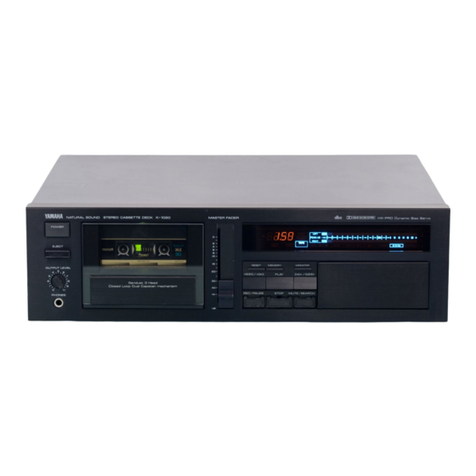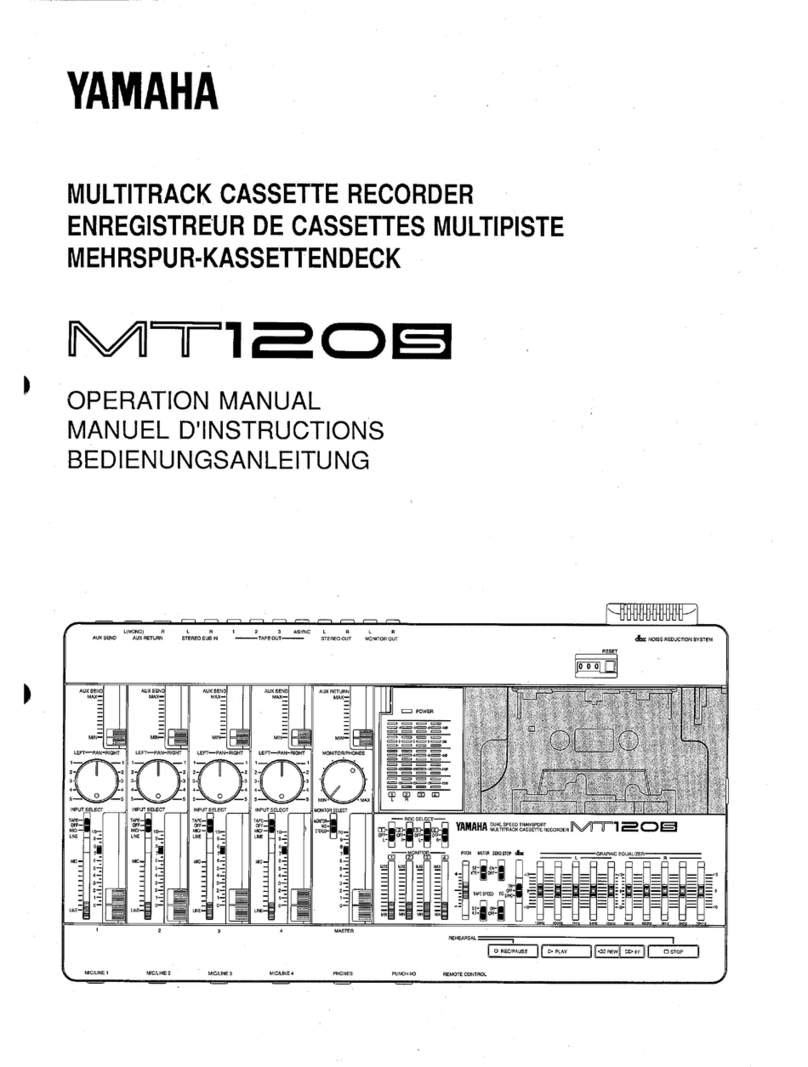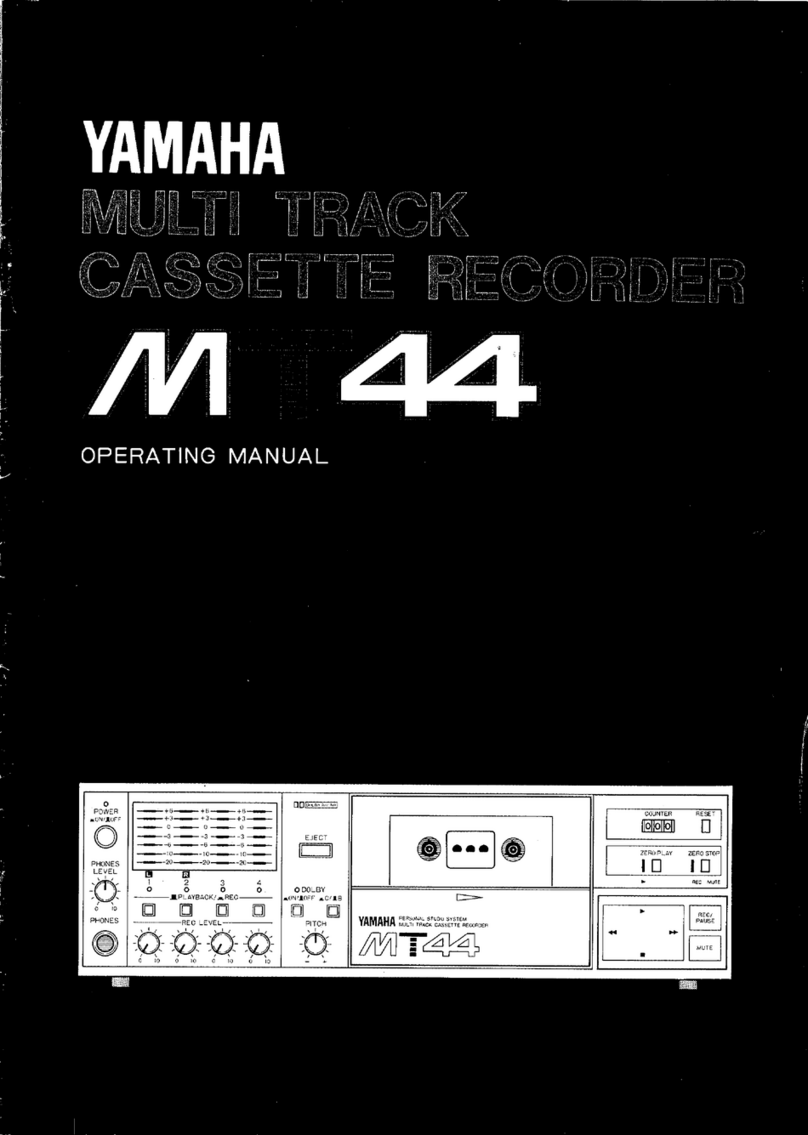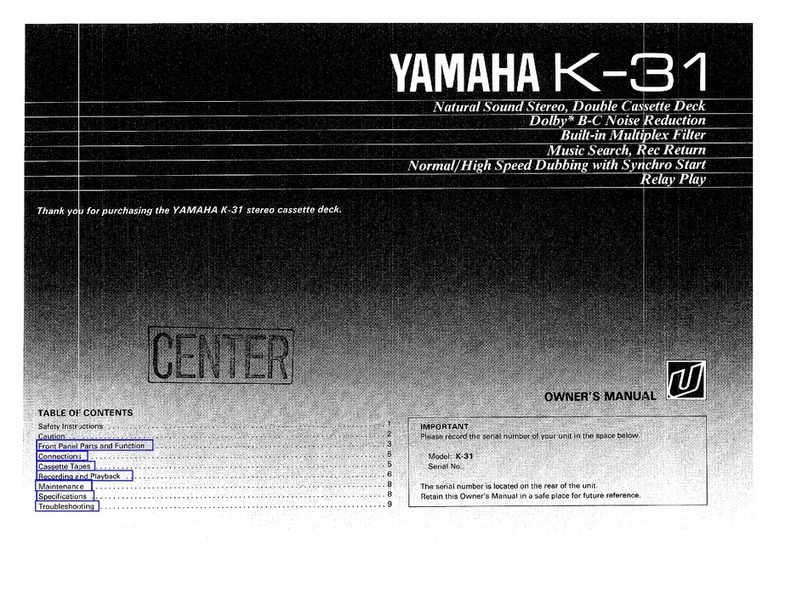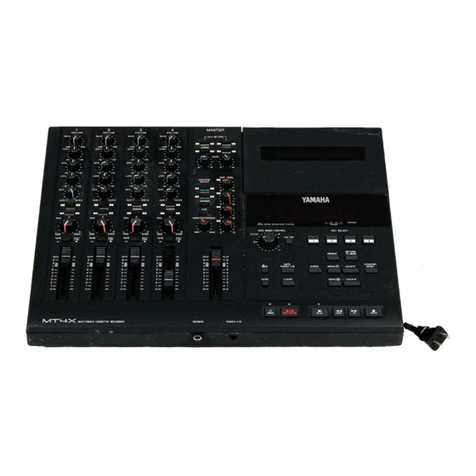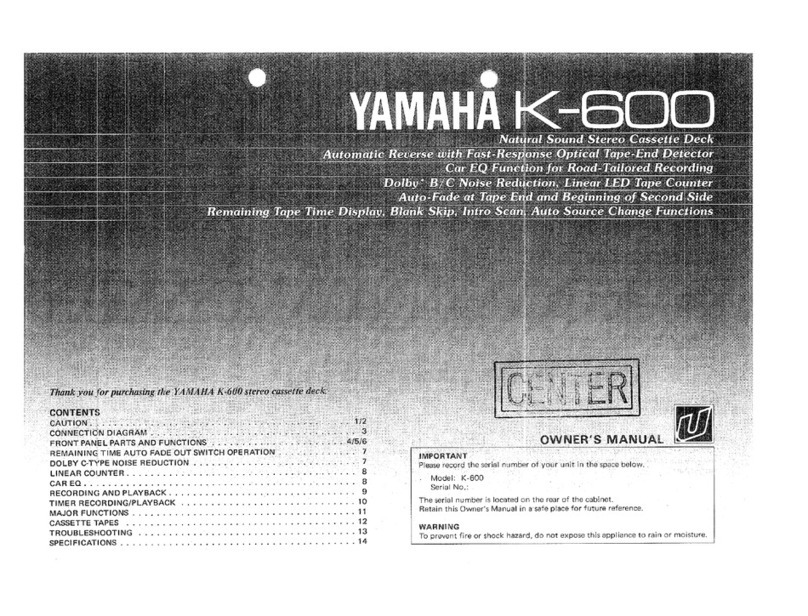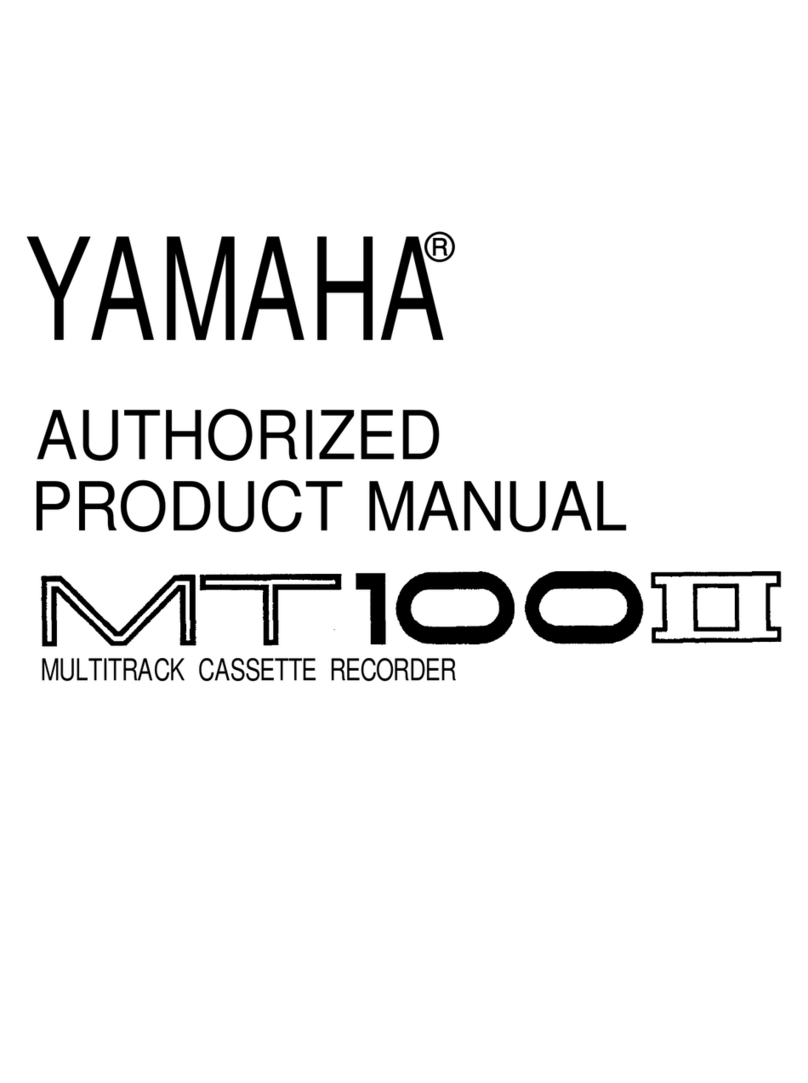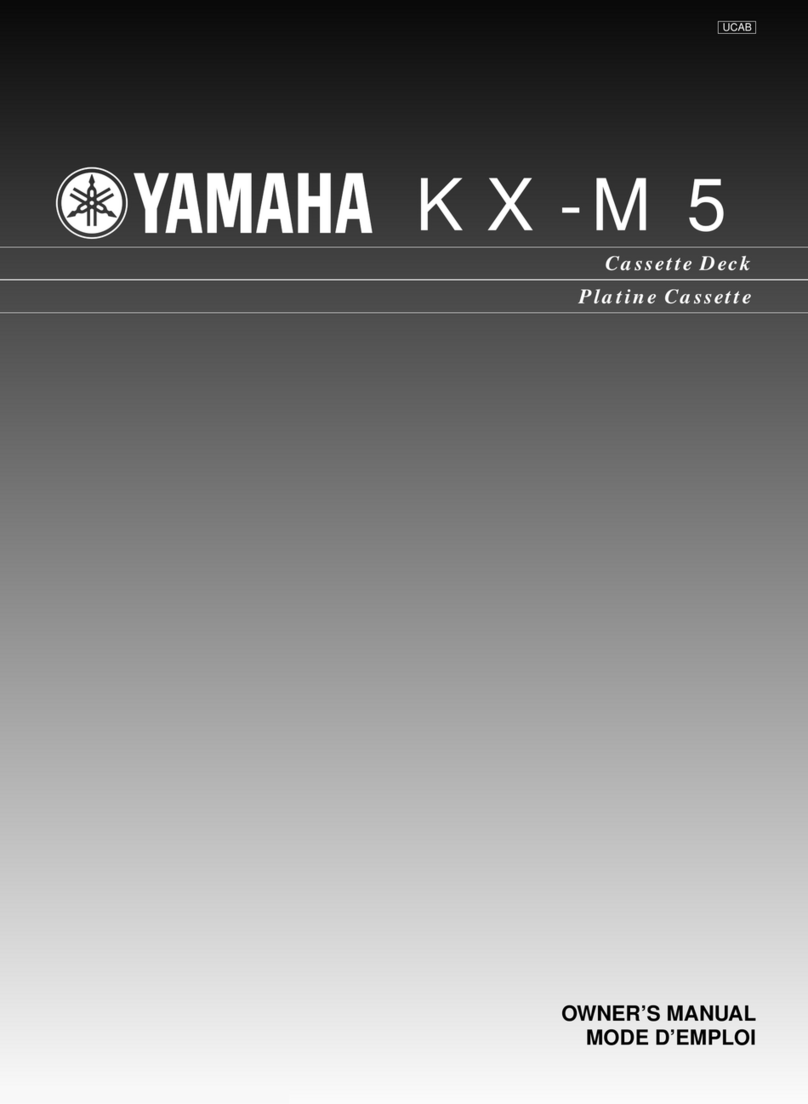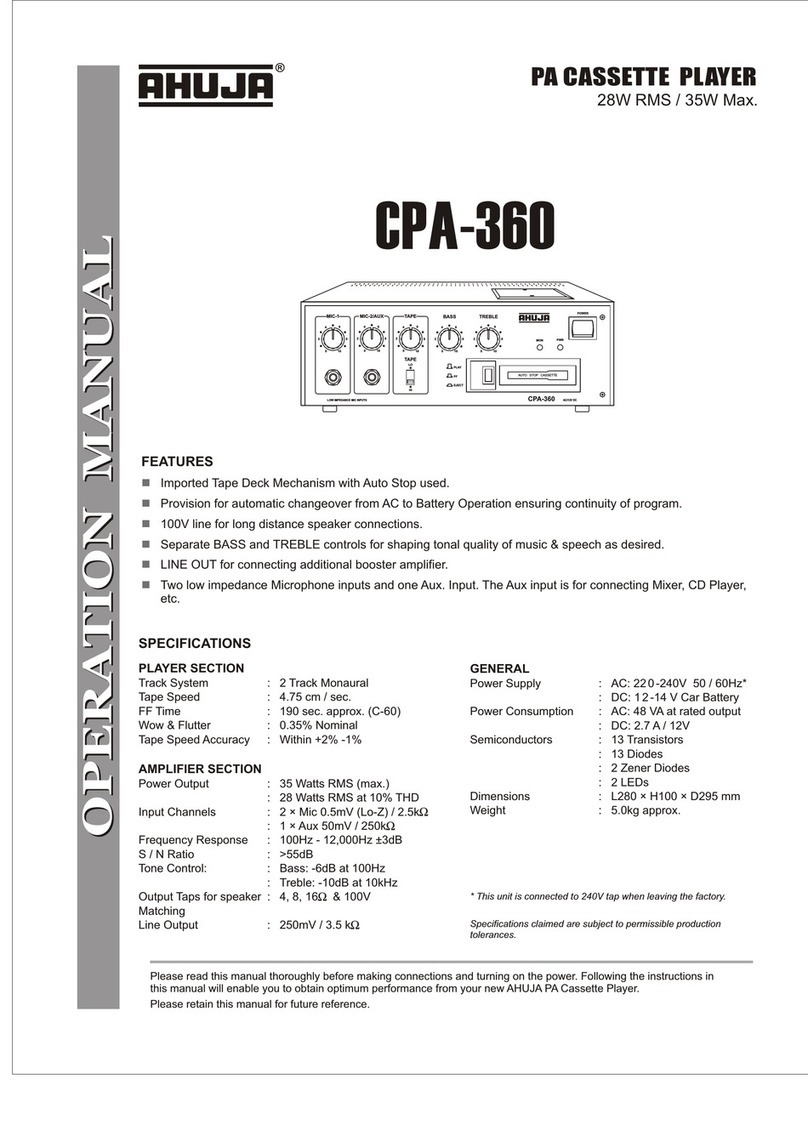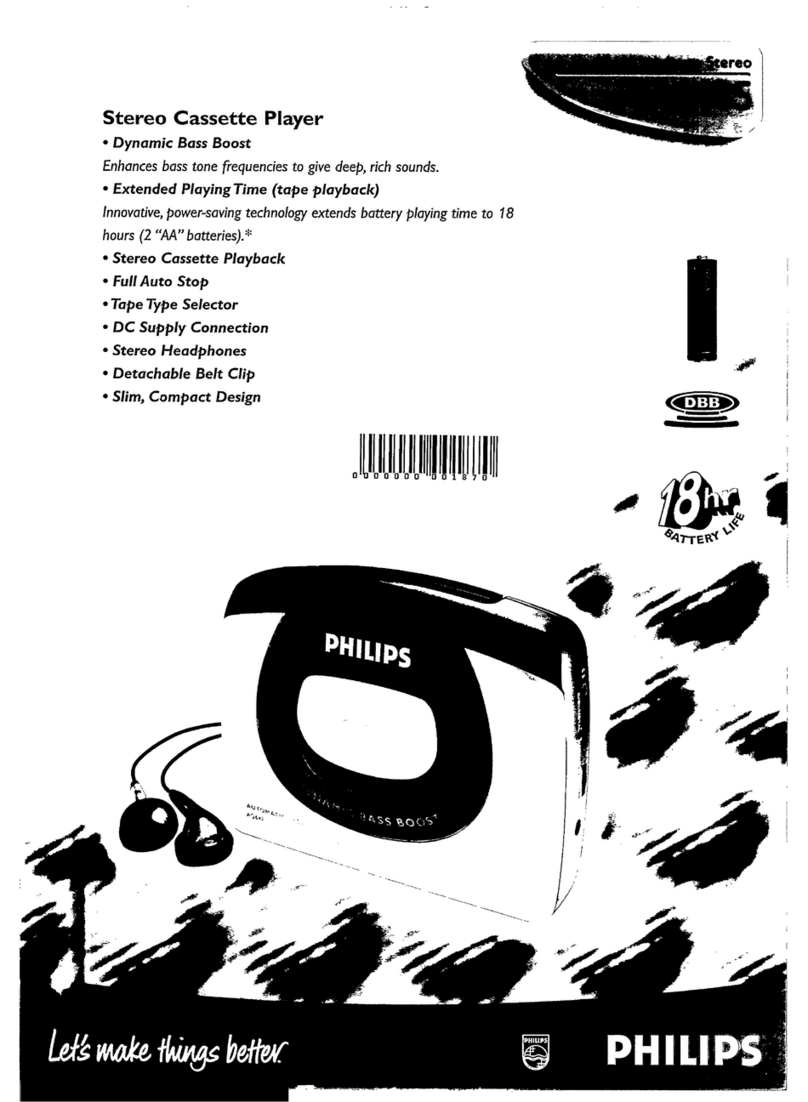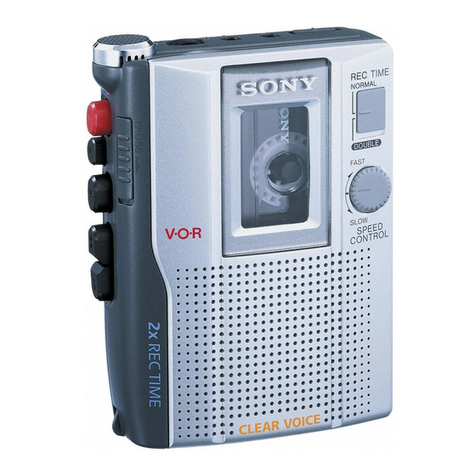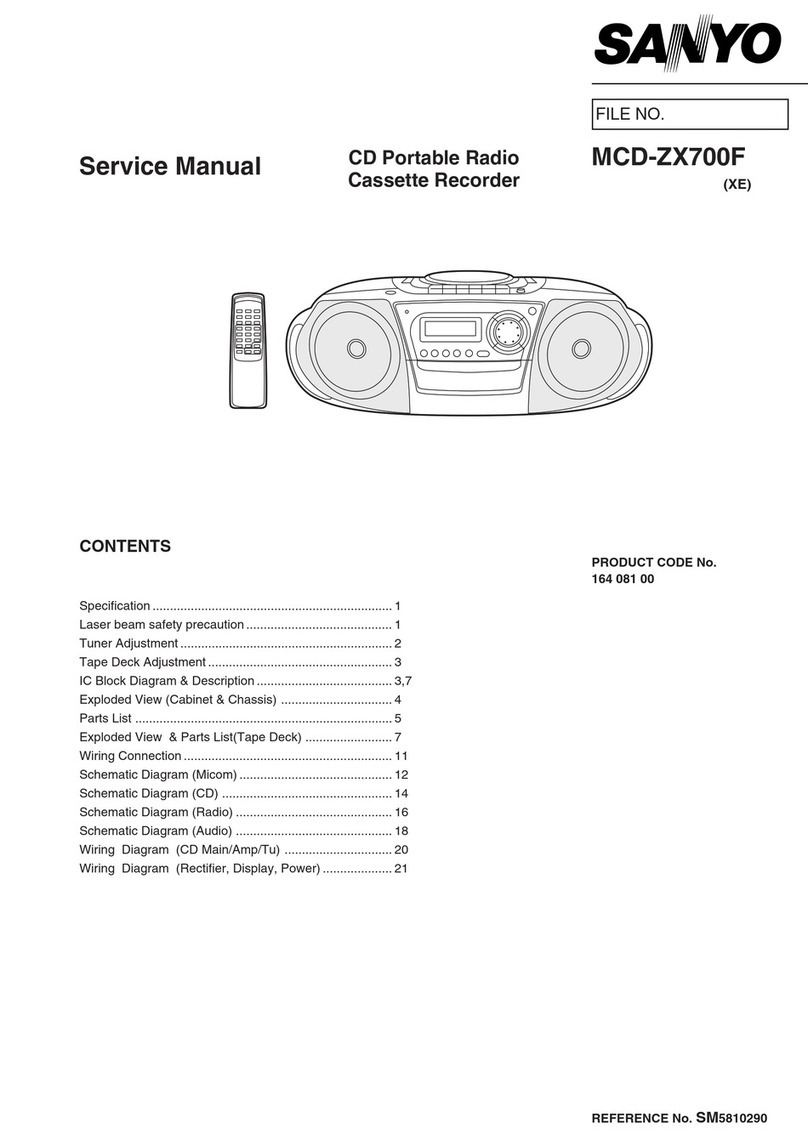
3
ENGLISH
CAUTION: READ THIS BEFORE
OPERATING YOUR UNIT.
FCC INFORMATION (for US customers only)
1.IMPORTANT NOTICE: DO NOT MODIFY THIS UNIT!
This product, when installed as indicated in the
instructions contained in this manual, meets FCC
requirements. Modifications not expressly approved
by Yamaha may void your authority, granted by the
FCC, to use the product.
2.IMPORTANT: When connecting this product to
accessories and/or another product use only high
quality shielded cables. Cable/s supplied with this
product MUST be used. Follow all installation
instructions. Failure to follow instructions could void
your FCC authorization to use this product in the USA.
3.NOTE: This product has been tested and found to
comply with the requirements listed in FCC
Regulations, Part 15 for Class "B" digital devices.
Compliance with these requirements provides a
reasonable level of assurance that your use of this
product in a residential environment will not result in
harmful interference with other electronic devices.
This equipment generates/uses radio frequencies and,
if not installed and used according to the instructions
found in the users manual, may cause interference
harmful to the operation of other electronic devices.
Compliance with FCC regulations does not guarantee
that interference will not occur in all installations. If this
product is found to be the source of interference,
which can be determined by turning the unit "OFF" and
"ON", please try to eliminate the problem by using one
of the following measures:
Relocate either this product or the device that is being
affected by the interference.
Utilize power outlets that are on different branch
(circuit breaker or fuse) circuits or install AC line filter/s.
In the case of radio or TV interference, relocate/reorient
the antenna. If the antenna lead-in is 300 ohm ribbon
lead, change the lead-in to coaxial type cable.
If these corrective measures do not produce
satisfactory results, please contact the local retailer
authorized to distribute this type of product. If you
cannot locate the appropriate retailer, please contact
Yamaha Electronics Corp., U.S.A. 6600 Orangethorpe
Ave, Buena Park, CA90620.
The above statements apply ONLY to those products
distributed by Yamaha Corporation of America or its
subsidiaries.
1. This unit is a sophisticated stereo cassette deck. To ensure
proper operation for the best possible performance, please
read this manual carefully.
2. Choose the installation location of your unit carefully. Avoid
placing it in direct sunlight or close to source of heat. Also
avoid locations subject to vibration and excessive dust, heat,
cold or moisture. Keep it away from sources of hum such as
transformers or motors.
3. Do not open the cabinet as this may result in damage to the
deck or electrical shock. If a foreign object should get into
the deck, contact your local dealer.
4. Do not apply excessive force when operating switches and
knobs.
5. When moving the deck, be sure to first pull out the power
plug and remove all cords connecting the deck to other
equipment.
6. Do not attempt to clean this unit with chemical solvents as
this may damage the finish. Use a clean, dry cloth.
7. Never allow metallic items (e.g. screwdrivers, tools, etc.) to
come near the record/playback head assembly. Doing so
may not only scratch or damage the head’s mirror-smooth
finish, it may also change the magnetic characteristics of the
heads, causing a deterioration in reproduction quality.
8. Although the record/playback head used in this unit is a high
quality head with outstanding reproduction characteristics, it
can become dirty through the use of old tapes or from dust
accumulation over time.
This can have a serious effect on reproduction quality.
Clean the heads regularly with one of the commonly available
head cleaners or with cleaning solutions as explained later in
this manual.
9. Be sure to read the “Troubleshooting”section of this manual
for advice on common operating errors before concluding
that your unit is faulty.
10. Unplug the power cord from the wall outlet if the unit is not to
be used for an extended period of time. To disconnect the
cord, pull it out by grasping the plug. Never pull the cord
itself.
11. Keep this manual in a safe place for future reference.
12. Voltage Selector (General model only)
The voltage selector on the rear panel of this unit must be
set for your local mains voltage BEFORE plugging in the
AC mains supply.
Please check the copyright laws in your country to record from
records, compact discs, radio, etc. Recording of copyright
material may infringe copyright laws.
CAUTION (FOR CANADA MODEL)
TO PREVENT ELECTRIC SHOCK, MATCH WIDE BLADE OF
PLUG TO WIDE SLOT, FULLY INSERT.
FOR CANADIAN CUSTOMERS
THIS CLASS B DIGITAL APPARATUS MEETS ALL
REQUIREMENTS OF THE CANADIAN INTERFERENCE-
CAUSING EQUIPMENT REGULATIONS.
We Want You Listening For A Lifetime
YAMAHA and the Electronic Industries Association's
Consumer Electronics Group want you to get the most out of
your equipment by playing it at a safe level.
One that lets the sound come through loud
and clear without annoying blaring or
distortion – and, most importantly, without
affecting your sensitive hearing. Since
hearing damage from loud sounds is often
undetectable until it is too late, YAMAHA and
the Electronic Industries Association's
Consumer Electronics Group recommend
you avoid prolonged exposure to excessive
volume levels.
We
Want You
LISTENING
For A Lifetime

